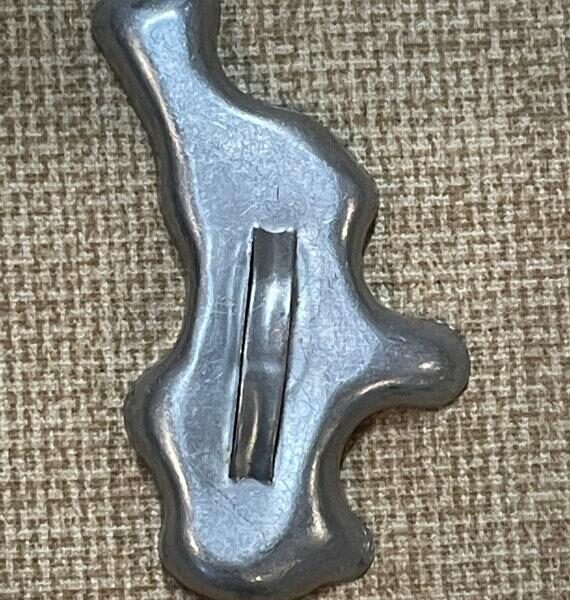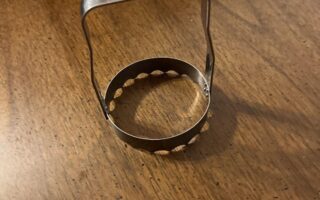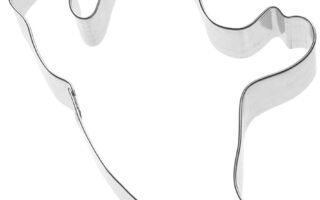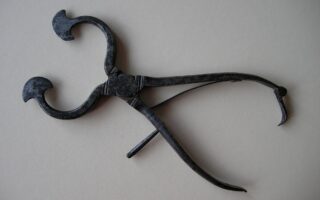In the world of culinary collectibles, few items inspire nostalgia and curiosity quite like antique cookie cutters. These seemingly simple tools, often crafted from tin, copper, or wood, hold stories and traditions within their intricate designs. As we dive into the fascinating realm of rare antique cookie cutters, we invite you to explore the artistry and history behind these charming artifacts. From whimsical shapes depicting holiday motifs to intricate patterns that evoke a sense of craftsmanship from bygone eras, each cutter has the potential to transport us back in time. Join us as we uncover the allure of these rare treasures, their evolution through the decades, and the collectors who fervently preserve their legacy. Whether you are an avid baker or a seasoned collector, the enchanting world of antique cookie cutters promises a delightful blend of history, artistry, and sweet memories.
Table of Contents
- The Allure of Rare Antique Cookie Cutters in Culinary History
- Identifying Unique Designs and Patterns for Collectors
- Restoration and Care Tips to Preserve Your Antique Treasures
- Where to Find the Most Coveted Cookie Cutters in the Market
- Q&A
- In Retrospect
The Allure of Rare Antique Cookie Cutters in Culinary History
The world of baking transcends mere nourishment; it weaves a tapestry of memory and artistry. Among the myriad of tools in a baker’s kitchen, few possess the charm and history of antique cookie cutters. Each unique piece, often crafted from materials such as tin or copper, tells a story that spans generations. The intricate designs and varying shapes, from whimsical animals to elegant florals, invite bakers to indulge their creativity and evoke sentimental memories of childhood baking sessions. As trends in culinary arts evolve, these rare finds attract collectors, food historians, and enthusiasts alike, celebrating the significant role these tools played in sharing sweetness during festive occasions.
Collecting antique cookie cutters opens a window to understanding the cultural significance behind holiday traditions, regional baking styles, and even social gatherings. Their allure lies not only in their aesthetic qualities but also in the artistry of their craftsmanship. Enthusiasts appreciate the distinct characteristics that differentiate each cutter, considering attributes such as:
- Material: Tin, copper, or even brass
- Age: Each decade reflects different styles and technologies
- Popularity: Patterns that were favored in particular eras
In addition to their beauty, these cookie cutters often come with fraught histories—some perhaps salvaged from abandoned bakeries or handed down through families. Their value can fluctuate with demand, often driven by collector shows or nostalgia-driven markets. This desire for home-baked treats intertwined with the sentimental journey of discovering rare antique cookie cutters is what keeps the spirit of baking alive, where culinary art becomes a bridge connecting the past to the present.
Identifying Unique Designs and Patterns for Collectors
As collectors delve into the realm of rare antique cookie cutters, they often uncover distinctive designs that reveal glimpses into the past. Each piece carries a story, often illustrated through its unique shape and intricate details. Some common design elements that captivate enthusiasts include:
- Seasonal Motifs: Items like Christmas trees, pumpkins, and hearts evoke nostalgia while reflecting cultural and historical traditions.
- Artistic Flair: Certain cookie cutters feature elaborate patterns or artistic elements, showcasing the craftsmanship of various eras.
- Tool Markings: Authentic pieces may display maker’s marks or other identifiers that signal their origin and age.
When evaluating potential additions to their collection, seasoned collectors often look for specific characteristics that enhance the value and aesthetic appeal of these antique cookie cutters. Key factors include:
| Characteristic | Significance |
|---|---|
| Material | Indications of durability and authentic vintage construction. |
| Condition | Physical state affects value; original finishes are often more desirable. |
| Rarity | Limited production pieces fetch higher prices due to scarcity. |
Restoration and Care Tips to Preserve Your Antique Treasures
Preserving antique cookie cutters requires a careful approach to maintain their unique charm and value. Start by cleaning your vintage treasures gently using soft brushes and mild soap solutions. Avoid immersing them in water, as excessive moisture can lead to rust or deterioration. For metal cookie cutters, applying a light coat of mineral oil can protect them from oxidation, while wooden or tin options should be stored in a cool, dry place away from direct sunlight. Regularly check your collection for signs of wear and tear, as early intervention can prevent further damage.
When it comes to display, consider using protective cases or shadow boxes that allow your antique cookie cutters to be appreciated without exposure to dust. Additionally, avoid overcrowding; give each piece enough space to breathe and showcase its artistry. For those looking to restore older pieces, consult with a professional for advice on materials and techniques that are safe for antiques. Remember, preserving the integrity of your cookie cutters enhances their desirability and keeps the rich history alive for future generations.
Where to Find the Most Coveted Cookie Cutters in the Market
For enthusiasts searching for rare antique cookie cutters, the journey often leads to a treasure trove of unique finds. Vintage shops, estate sales, and specialized antique fairs are excellent starting points. Additionally, online marketplaces such as eBay and Etsy frequently feature listings from collectors and artisans seeking to pass on their beloved pieces. When exploring these venues, keep an eye out for specific styles and eras, such as Victorian or Depression-era designs, which not only serve as functional kitchen tools but also as charming collectibles.
Another great way to uncover rare cookie cutters is by joining collector clubs and online forums dedicated to baking enthusiasts and antiques. Within these communities, individuals often share leads on upcoming auctions, local estate sales, and recommendations for reputable dealers. You might also stumble upon local antiques shops that feature themed collections or unique, one-of-a-kind pieces. Here are some noteworthy resources to consider:
- Antique Shows: Look for region-specific antique shows that specialize in kitchenware.
- Social Media: Use platforms like Instagram and Facebook to follow collectors and dealers.
- Online Auctions: Websites dedicated to auctions can provide access to rare finds.
Q&A
Q&A: Unraveling the Mystique of Rare Antique Cookie Cutters
Q1: What makes antique cookie cutters “rare”?
A: Antique cookie cutters are considered rare when they are no longer in production, date back to a specific time period, and feature unique designs or materials. Cutters that were produced for a limited time, in small batches, or associated with significant historical events often carry a rarity that appeals to collectors.
Q2: How can I identify an antique cookie cutter?
A: To identify an antique cookie cutter, look for signs of age such as rust, patina, or signs of wear. Many antique cutters are made of tin or copper, and the craftsmanship can reveal their age. The shape and design can also provide clues; older cutters often have intricate or whimsical designs compared to more modern, mass-produced versions.
Q3: What are some notable designs found in rare antique cookie cutters?
A: Rare antique cookie cutters can feature a vast array of designs, from simple shapes like stars and circles to more elaborate figures such as animals, holiday themes, and whimsical characters. Unique regional designs or those created for specific events, like World War I fundraising efforts or Victorian holiday traditions, stand out in collectors’ circles.
Q4: Where can I find rare antique cookie cutters?
A: Rare antique cookie cutters can often be found at estate sales, antique shops, flea markets, and online auction platforms. Collectible fairs and specialty vintage markets also provide excellent opportunities to discover hidden gems. Building relationships with antique dealers can provide insider knowledge and early access to rare finds.
Q5: How should I care for and store antique cookie cutters?
A: Proper care and storage of antique cookie cutters involve gentle cleaning with mild soap and avoiding harsh chemicals that can damage the material. Store them in a cool, dry place, ideally in a padded container or wrapped in fabric to protect them from scratches and dust. It’s best to avoid submerging them in water, especially if they are made of metal.
Q6: Are rare antique cookie cutters valuable?
A: The value of rare antique cookie cutters can vary greatly depending on their condition, rarity, historical significance, and demand within the collector community. Some cutters may fetch a few dollars, while others can sell for hundreds or even thousands. Researching recent sales and consulting expert appraisers can provide a more accurate valuation.
Q7: Can I use rare antique cookie cutters for baking?
A: While some collectors prefer to keep their antique cookie cutters as decorative items, many can be used for baking if they are in good condition. However, it’s wise to test them first by making a batch of cookies that doesn’t require perfect shapes. This way, you can enjoy both the art of baking and the charm of antiques without risking damage to your rare pieces.
Q8: What should I know before starting a collection of rare antique cookie cutters?
A: Before starting a collection, it’s essential to research the history, styles, and materials of cookie cutters. Joining collector groups or forums can provide valuable insights, tips, and recommendations. Set a budget and focus on what captures your interest, whether it’s a particular era, design, or manufacturer. Patience is key, as finding rare pieces can take time.
Q9: Are there any historical stories linked to specific antique cookie cutters?
A: Yes, many antique cookie cutters come with fascinating stories. For instance, some cutters were created during the Great Depression as a way to make celebrations more special with limited resources. Others were produced to commemorate events, such as World War II, where cookies were shaped as patriotic symbols. Each cutter carries a snippet of history that can enrich the collector’s experience.
Q10: Can you recommend resources for learning more about antique cookie cutters?
A: Absolutely! Several books and online resources delve into the history and collecting of antique cookie cutters. Websites and forums dedicated to vintage kitchenware, as well as social media groups, can also offer a wealth of information. Museums and local historical societies often host exhibitions that include vintage kitchen tools, providing context and historical background.
In Retrospect
In a world that often favors the modern and the mass-produced, rare antique cookie cutters stand as delightful reminders of a more artisanal past. These charming artifacts not only serve as tools for baking but as tangible pieces of history, each with its own unique story waiting to be told. As you navigate the vibrant landscape of collecting, remember that the thrill lies not just in the hunt for these coveted items, but in the connections they forge—between generations, cultures, and even moments in time.
Embracing these vintage treasures allows us to tap into a sweet nostalgia, blending culinary creativity with the rich tapestry of our shared history. So whether you’re a passionate baker, an avid collector, or simply a lover of beautiful things, consider welcoming a rare antique cookie cutter into your home. In doing so, you’re not just enhancing your kitchen; you’re inviting a piece of the past into your present, ready to shape memories and delights for years to come. Happy collecting, and may your culinary adventures continue to be sweetened by the artistry of history!



